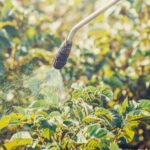If you want to ensure successful harvests in your vegetable garden, it is crucial to have a reliable and accurate gardening calendar. One such calendar that stands out is the IFAS Vegetable Gardening Calendar. This comprehensive guide provides valuable information on the best times to plant, care for, and harvest various types of vegetables throughout the year.
A vegetable gardening calendar serves as an essential tool for any gardener, whether they are just starting out or have years of experience. It helps them stay organized and plan their planting schedule effectively. By following a gardening calendar like the one provided by IFAS (Institute of Food and Agricultural Sciences), gardeners can maximize their yields and minimize potential problems.
In this article series, we will explore the IFAS Vegetable Gardening Calendar in detail. We will discuss its significance and how it can help gardeners achieve optimal results in their plots.
We will also break down the calendar month-by-month so that readers can easily follow along and plan their activities accordingly. Additionally, we will provide practical tips on soil preparation, seed selection, planting strategies, nurturing plants, addressing common challenges, harvesting at the right time, and extending harvests through succession planting.
By embracing the IFAS Vegetable Gardening Calendar as a valuable resource, gardeners can gain confidence in their ability to grow healthy and bountiful crops throughout the year. So let’s dive in and uncover the secrets to successful vegetable gardening with this informative guide.
Exploring the IFAS Vegetable Gardening Calendar
The IFAS Vegetable Gardening Calendar is a valuable resource for any vegetable gardener, whether they are beginners or experienced growers. This section will provide an overview of the calendar and highlight its significance in helping gardeners achieve successful harvests.
The Importance of a Gardening Calendar
A gardening calendar serves as a guide, providing information on the best times to perform important tasks in the garden. By following a calendar, gardeners can ensure that they are planting, watering, fertilizing, and harvesting their vegetables at the optimal times. This helps to maximize yields, prevent pest and disease problems, and promote overall plant health.
The IFAS Vegetable Gardening Calendar specifically caters to gardeners in Florida and other similar climates. It takes into account factors such as temperature variations and the specific growing conditions in these regions. This makes it extremely relevant and reliable for gardeners in these areas.
An Overview of the IFAS Vegetable Gardening Calendar
The IFAS Vegetable Gardening Calendar provides a month-by-month breakdown of tasks that need to be accomplished in the vegetable garden. It covers everything from soil preparation to planting strategies, nurturing plants, addressing seasonal challenges, and harvest timing.
Each month includes specific recommendations for what vegetables should be planted or harvested during that time period. The calendar also provides information on general care practices such as watering and fertilizing guidelines. Additionally, it offers guidance on how to deal with common issues that are encountered throughout the growing season.
By following this comprehensive calendar, gardeners can stay organized and ensure that they are taking appropriate actions at the right times. This not only increases their chances of success but also helps them plan ahead and make necessary preparations for each stage of the gardening process.
Overall, the IFAS Vegetable Gardening Calendar is an invaluable tool for vegetable gardeners in Florida and other similar regions. Its detailed recommendations tailored to specific climates help gardeners make informed decisions about their gardening practices. By following the calendar, gardeners can achieve thriving vegetable gardens and enjoy a bountiful harvest.
The Month-by-Month Guide
January
In January, the IFAS Vegetable Gardening Calendar advises gardeners to focus on cool-season vegetables such as broccoli, kale, lettuce, and radishes. It is also a good time to plant bare-root plants like strawberries and asparagus crowns. Additionally, January is the perfect month for starting seeds indoors for warm-season vegetables like tomatoes and peppers.
February
As February approaches, it’s time to prepare your garden for spring planting. Clear any remaining winter crops and remove weeds or debris from the soil. This month is ideal for planting root vegetables such as carrots, beets, and onions. Don’t forget about annual herbs like cilantro and parsley that can add flavor to your dishes.
March
With spring in full swing, March is a busy month in the vegetable garden. Plant warm-season vegetables like beans, corn, cucumbers, squash, and melons directly into the ground. Pay attention to the spacing recommendations provided by the IFAS Calendar to ensure proper growth of your plants. Transplant seedlings of tomatoes and peppers when they are about four inches tall.
April
April brings warmer weather, making it an excellent time for quick-growing vegetables. Plant leafy greens like spinach and lettuce as well as herbs including basil and dill. Be sure to water your plants regularly during this period of increased heat.
May
As temperatures rise, May is all about maintaining your vegetable garden’s health. Check for pests regularly and take proactive measures such as handpicking or using organic pest control methods if necessary. Provide sufficient water to prevent drought stress in your plants.
By following these monthly guidelines based on the IFAS Vegetable Gardening Calendar, you can ensure that your garden stays productive throughout the year and achieve successful harvests season after season.
Preparing the Ground
Soil preparation is a crucial step in achieving successful vegetable gardening. By properly preparing the ground, you can maximize plant health and growth, ensuring a bountiful harvest. The IFAS Vegetable Gardening Calendar provides valuable recommendations for soil preparation techniques tailored to the specific needs of each month.
One key tip for preparing the ground is to assess your soil’s composition and fertility. Conduct a soil test to determine its pH level and nutrient content. This will help you identify any deficiencies or imbalances that need to be addressed before planting. Based on the results, you can amend the soil with organic matter such as compost, well-rotted manure, or peat moss to improve its fertility.
In addition, it is important to ensure proper drainage in your garden. Soil that retains too much water can lead to root rot and other diseases in plants. On the other hand, if the soil drains too quickly, it may not hold enough moisture for plant roots to access. To enhance drainage, consider incorporating organic matter into heavy clay soils or adding sand to improve water movement.
Tips for Soil Preparation
- Conduct a soil test to determine pH level and nutrient content.
- Amend the soil with organic matter based on the test results.
- Enhance drainage by incorporating organic matter or sand.
Another important aspect of preparing the ground is weed control. Weeds compete with vegetables for nutrients, water, and sunlight, hindering their growth and productivity. Prior to planting your vegetables, remove any existing weeds from the garden bed. Consider using mulch (such as straw or wood chips) to suppress weed growth throughout the growing season.
Lastly, it is essential to prepare raised beds or garden beds with appropriate dimensions and spacing. Raised beds provide better control over soil quality and temperature while optimizing space utilization. When determining bed size and spacing between plants, refer to the IFAS Vegetable Gardening Calendar for specific recommendations based on the types of vegetables you plan to grow.
Additional Tips for Soil Preparation
- Remove weeds from the garden bed prior to planting.
- Use mulch to suppress weed growth throughout the season.
- Consider raised beds for better control and space optimization.
- Refer to the IFAS Calendar for recommended bed sizes and plant spacing.
By following these tips and tricks for soil preparation, you can create an optimal growing environment that promotes healthy plants and abundant yields. Taking the time to prepare your soil properly sets a solid foundation for a successful vegetable garden. So, roll up your sleeves, grab your garden tools, and get started on preparing the ground for a fruitful gardening season ahead.
Seed Selection and Sowing
When it comes to successful vegetable gardening, selecting the right seeds and sowing them at the appropriate time are crucial steps. The IFAS Vegetable Gardening Calendar provides valuable recommendations for timing and techniques to ensure optimal growth and harvest. By following these guidelines, gardeners can maximize their yield and improve the overall health of their plants.
The first step in seed selection is choosing high-quality seeds that are suitable for your specific growing conditions. Consider factors such as climate, soil type, and local pests when selecting varieties. The IFAS Vegetable Gardening Calendar offers a comprehensive list of recommended vegetable varieties based on their adaptability to different regions. This information helps gardeners make informed decisions about which seeds to purchase.
Once you have chosen your seeds, sowing them at the right time is essential for successful germination and growth. The IFAS Vegetable Gardening Calendar provides specific recommendations for each vegetable variety, taking into account factors such as frost dates and temperature ranges. Following these guidelines ensures that seeds are sown when conditions are favorable for germination and minimizes the risk of damage from extreme weather events.
In addition to timing, proper technique is important when sowing seeds. Different vegetables have varying seed depth requirements, so it is important to follow the instructions provided by the IFAS calendar for each specific crop. Some seeds may also benefit from pre-soaking or scarification techniques, which can improve germination rates. By following the recommended techniques outlined in the IFAS calendar, gardeners can increase their chances of successful seed establishment.
Overall, seed selection and sowing are foundational steps in vegetable gardening. By referring to the IFAS Vegetable Gardening Calendar‘s recommendations for timing and techniques, gardeners can set themselves up for success from the very beginning. Taking careful consideration of these factors will ultimately lead to healthier plants, increased yields, and a more rewarding gardening experience.
| Seed Selection and Sowing Tips | Recommendations Based on IFAS Calendar |
|---|---|
| Choose high-quality seeds suitable for the growing conditions | Refer to the IFAS Vegetable Gardening Calendar for recommended varieties that are adaptable to your region. |
| Sow seeds at the appropriate time | Follow the specific recommendations provided by the IFAS calendar, taking into account frost dates and temperature ranges. |
| Familiarize yourself with proper sowing techniques | Consult the IFAS calendar for each vegetable variety’s seed depth requirements and any additional techniques such as pre-soaking or scarification. |
Planting Strategies
When it comes to vegetable gardening, proper spacing, arrangement, and intercropping can make a significant impact on your plants’ growth and overall success. The IFAS Vegetable Gardening Calendar provides valuable guidance on how to implement effective planting strategies for optimal results.
Proper spacing between plants is essential to ensure they have enough room to grow and access sunlight, water, and nutrients. The IFAS Vegetable Gardening Calendar recommends specific spacing guidelines based on the type of vegetable you are growing.
For instance, leafy greens like lettuce and spinach generally require about 6-8 inches of space between each plant, while larger crops like tomato plants may need 2-3 feet of space. To make it easier for gardeners to visualize their garden layout, the calendar also provides information on how many plants can be accommodated in a square foot or row.
Arranging vegetables in your garden is another crucial aspect of maximizing growth potential. The IFAS Calendar suggests grouping vegetables with similar growth habits together so that they do not shade each other or compete for resources.
For example, tall crops like corn should be planted on the northern side of your garden bed to avoid shading shorter plants. Additionally, arranging crops in rows rather than randomly scattering them ensures efficient use of space and makes it easier for maintenance tasks such as weeding and watering.
Intercropping is a technique where different types of vegetables are grown close together to utilize space effectively while providing mutual benefits. Certain combinations can help deter pests by creating confusion or repelling them with companion plantings known for their pest-deterring properties. The IFAS Vegetable Gardening Calendar recommends intercropping techniques such as planting lettuce under a trellis supporting vining vegetables like beans or cucumbers or growing radishes alongside carrots to discourage carrot fly infestations.
By following the planting strategies outlined in the IFAS Vegetable Gardening Calendar, you can optimize the growth and productivity of your vegetable garden. Proper spacing, arrangement, and intercropping techniques contribute to healthier plants, increased yields, and a more efficient use of space. So next time you plan your garden layout, be sure to consult the IFAS Calendar for expert advice on how to properly space, arrange, and intercrop your vegetables for optimal growth.
Nurturing Your Plants
Proper nurturing of your plants is essential to ensure their healthy growth and successful harvest. The IFAS Vegetable Gardening Calendar not only provides guidance on when to plant, but also offers valuable recommendations for watering, fertilizing, and pest control techniques that align with the specific needs of each month’s crops.
Watering is a key aspect of plant care, and it is important to provide plants with adequate moisture without overwatering. The IFAS Calendar takes into account the seasonal weather conditions and provides recommendations for each month. For example, during hot summer months, vegetables may require more frequent watering to combat the heat stress. On the other hand, during cooler months, water needs may be reduced. It is crucial to monitor soil moisture levels regularly and adjust watering frequency accordingly.
Fertilization plays a vital role in providing plants with essential nutrients for optimal growth and productivity. The IFAS Vegetable Gardening Calendar advises specific timing for fertilization based on the stage of plant development and nutrient requirements. Prior to planting, it is recommended to amend the soil with organic matter such as compost or well-rotted manure. During active growth periods, supplemental fertilization can be done using slow-release granular fertilizers or liquid fertilizers applied at appropriate intervals.
Pest control is another crucial aspect addressed by the IFAS Calendar. Different pests can pose threats to vegetable crops throughout the year. By following the calendar’s recommendations for pest control activities such as monitoring, prevention measures like companion planting or barriers, and environmentally friendly pest management strategies including biological controls or organic pesticides; gardeners can effectively protect their plants from damage.
| Month | Watering Guidelines | Fertilization Recommendations | Pest Control Strategies |
|---|---|---|---|
| January | Water plants deeply once per week, more frequently if experiencing dry conditions. | Apply slow-release granular fertilizer to established plants according to package instructions. | Monitor for pests such as aphids or cabbage worms. Use row covers or organic sprays as needed. |
| February | Water plants thoroughly every three days, adjusting frequency based on weather conditions. | Side dress with compost or well-rotted manure around plants every two weeks. | Inspect for pests like cutworms or slugs. Apply biological controls like beneficial nematodes if necessary. |
By following the watering, fertilizing, and pest control techniques recommended in alignment with the IFAS Calendar, you can provide your vegetable garden with the care it needs throughout the year. Implementing these practices will help ensure healthy and productive plants, leading to a bountiful harvest. Remember to regularly refer to the IFAS Vegetable Gardening Calendar for specific guidelines tailored to each month’s unique requirements.
Seasonal Challenges
Having a vegetable garden is a rewarding experience, but it can come with its fair share of challenges. Throughout the year, gardeners may encounter various issues that affect the health and productivity of their plants. Fortunately, the IFAS Vegetable Gardening Calendar provides valuable guidance on how to address these challenges effectively.
One common issue that gardeners face is pest infestations. Different pests can invade gardens at different times of the year, causing damage to crops. The IFAS Vegetable Gardening Calendar includes information on when certain pests are most active and recommends appropriate control measures.
For example, during the summer months, aphids may be a prevalent problem. The calendar suggests using insecticidal soaps or horticultural oils to combat these pests. By following the calendar’s recommendations, gardeners can take preventive measures and avoid significant losses in their harvest.
Another challenge that vegetable gardeners often encounter is disease outbreaks. Diseases can spread quickly among plants, leading to wilting, discoloration, and even death. The IFAS Vegetable Gardening Calendar offers tips on disease prevention and management based on specific times of the year. For instance, in humid climates during springtime, fungal diseases like powdery mildew may be more prevalent. The calendar advises implementing proper spacing between plants for increased air circulation and treating affected plants with fungicides if necessary.
Weather-related challenges are also a consideration for vegetable gardeners. Extreme temperatures, droughts, heavy rains, and frost can all impact plant growth and overall health.
The IFAS Vegetable Gardening Calendar takes into account regional climate variations and provides guidelines for adapting gardening practices accordingly during challenging weather conditions. For example, if there is a prediction of prolonged hot weather in your area during the summer months, it may recommend providing shade for sensitive crops or adjusting watering routines to avoid water stress.
By addressing these common challenges and following the troubleshooting tips provided by the IFAS Vegetable Gardening Calendar, gardeners can overcome potential setbacks and maintain a thriving vegetable garden throughout the year. It is essential to monitor plants regularly, identify any issues early on, and take prompt action in accordance with the calendar’s recommendations. With diligent care and attention, gardeners can overcome seasonal challenges and maximize their chances of a successful harvest.
Harvesting and Beyond
From the moment you plant your vegetable garden, the anticipation of harvest day begins. However, knowing the right time to reap the fruits of your labor can be challenging without proper guidance. This is where the IFAS Vegetable Gardening Calendar becomes an invaluable tool. In this section, we will explore the significance of understanding when to harvest your vegetables and how to extend your harvest with succession planting, all based on the recommendations of the IFAS calendar.
Harvesting vegetables at their peak ripeness ensures optimal flavor and nutritional value. The IFAS Vegetable Gardening Calendar provides valuable information on when to expect each crop’s maturity date, allowing you to plan accordingly. This knowledge helps prevent premature harvesting or waiting too long, ensuring that you enjoy your produce at its best.
Succession planting is a technique that involves sowing seeds or transplanting new seedlings in intervals throughout the growing season. By staggering plantings, you can extend your harvest over an extended period, rather than having a single large harvest followed by nothing more. The IFAS Vegetable Gardening Calendar provides insight into when it is best to start succession plantings for different crops.
To utilize succession planting effectively, consider factors such as crop maturity dates and ideal growing conditions for each vegetable variety. For example, if you are growing leafy greens such as lettuce or spinach, start by sowing a small batch directly in the ground or in containers at recommended intervals. As those early plantings approach maturity, sow another round of seeds to ensure a continuous supply of fresh leaves throughout the season.
Conclusion
In conclusion, the IFAS Vegetable Gardening Calendar is an invaluable resource for anyone looking to achieve a bountiful and sustainable garden. By following this calendar, gardeners can ensure that they are planting their vegetables at the most optimal times throughout the year. This not only increases the chances of successful harvests but also promotes the overall health and growth of the plants.
One of the key advantages of using the IFAS Vegetable Gardening Calendar is its month-by-month breakdown. This allows gardeners to stay organized and informed about what tasks need to be done each month, from soil preparation to harvesting. By knowing exactly when to do these tasks, gardeners can maximize plant health and avoid potential setbacks or issues that may arise.
Additionally, by embracing the IFAS Vegetable Gardening Calendar, gardeners can also contribute to a more sustainable future. This calendar takes into account important considerations such as water usage and pest control techniques. By following these recommendations, gardeners can minimize negative impacts on the environment while still achieving successful harvests.
Overall, implementing the practices outlined in the IFAS Vegetable Gardening Calendar can greatly improve your gardening experience. Whether you’re a beginner or an experienced gardener, this calendar provides valuable guidance and knowledge that will lead to a more productive and sustainable garden for years to come. So why wait? Embrace the IFAS Vegetable Gardening Calendar today and reap the rewards of a bountiful harvest tomorrow.
Frequently Asked Questions
When should I start a vegetable garden in Florida?
In Florida, the ideal time to start a vegetable garden depends on the specific region within the state. Generally, it is recommended to start planting your vegetable garden in Florida during the fall or winter months.
This allows for cooler temperatures, which are more suitable for many vegetable crops. However, if you live in South Florida where winters are milder, you can also consider starting your vegetable garden in late summer or early fall.
What vegetables should I plant in Florida right now?
In Florida, there are several vegetables that can be planted right now depending on the region and climate conditions. Some common vegetables that can be planted include tomatoes, peppers, cucumbers, summer squash, beans, and sweet corn.
Additionally, leafy greens like lettuce and spinach thrive well during this time of year. It is important to research which specific varieties are best suited for your particular region in Florida as soil conditions and microclimates may vary across the state.
What is the best month to plant vegetables in Florida?
The best month to plant vegetables in Florida varies based on different factors such as location within the state and desired crops. However, generally speaking, many gardeners find success planting their vegetables between September and February.
During these months, temperature conditions tend to be more favorable for most vegetable crops as they prefer cooler weather compared to the hot and humid summers in Florida. It is recommended to consult with local agricultural extension offices or experienced gardeners in your area to get precise timing recommendations based on your specific location within Florida.

If you’re looking to get into vegetable gardening, or are just looking for some tips on how to make your current garden better, then you’ve come to the right place! My name is Ethel and I have been gardening for years. In this blog, I’m going to share with you some of my best tips on how to create a successful vegetable garden.





